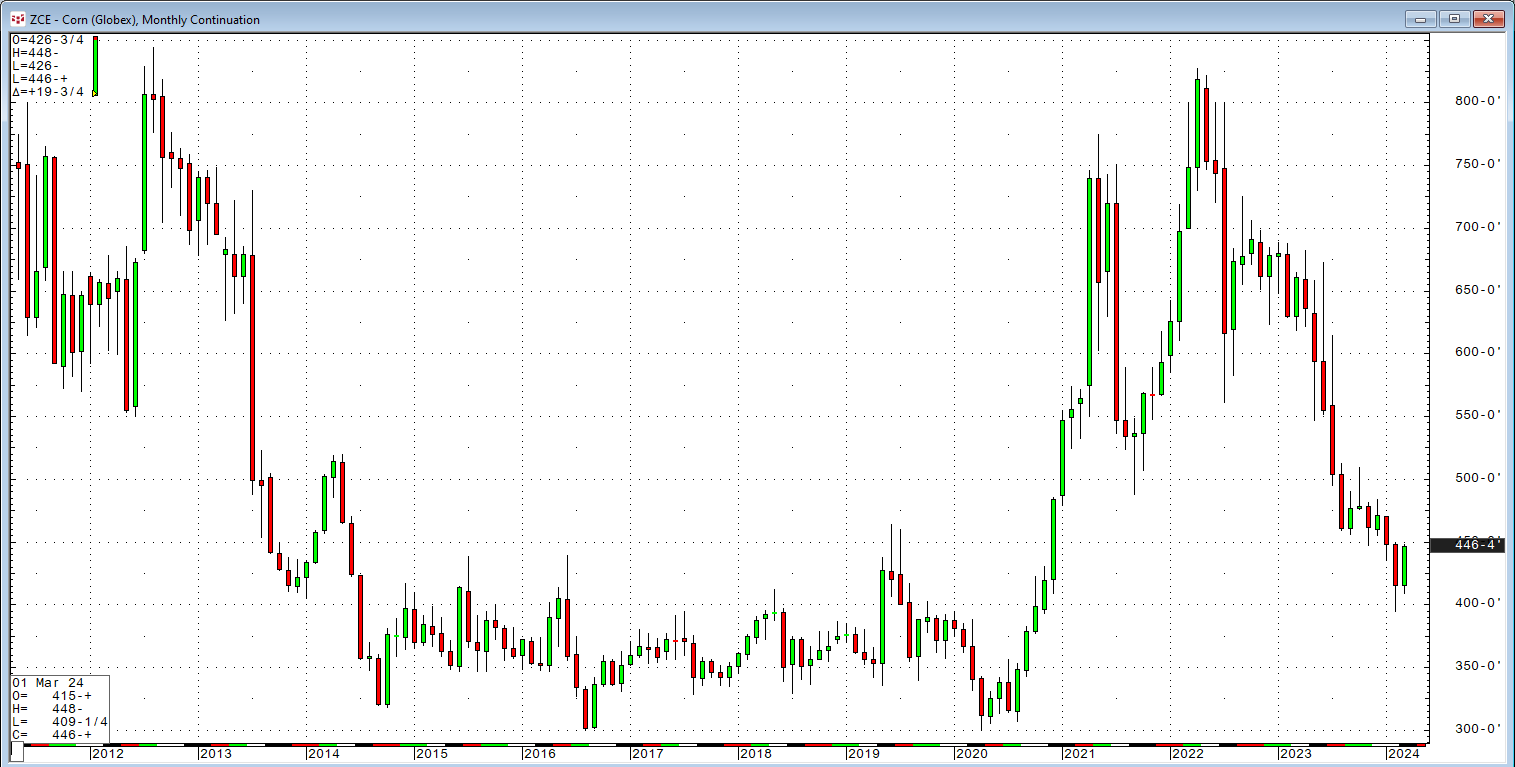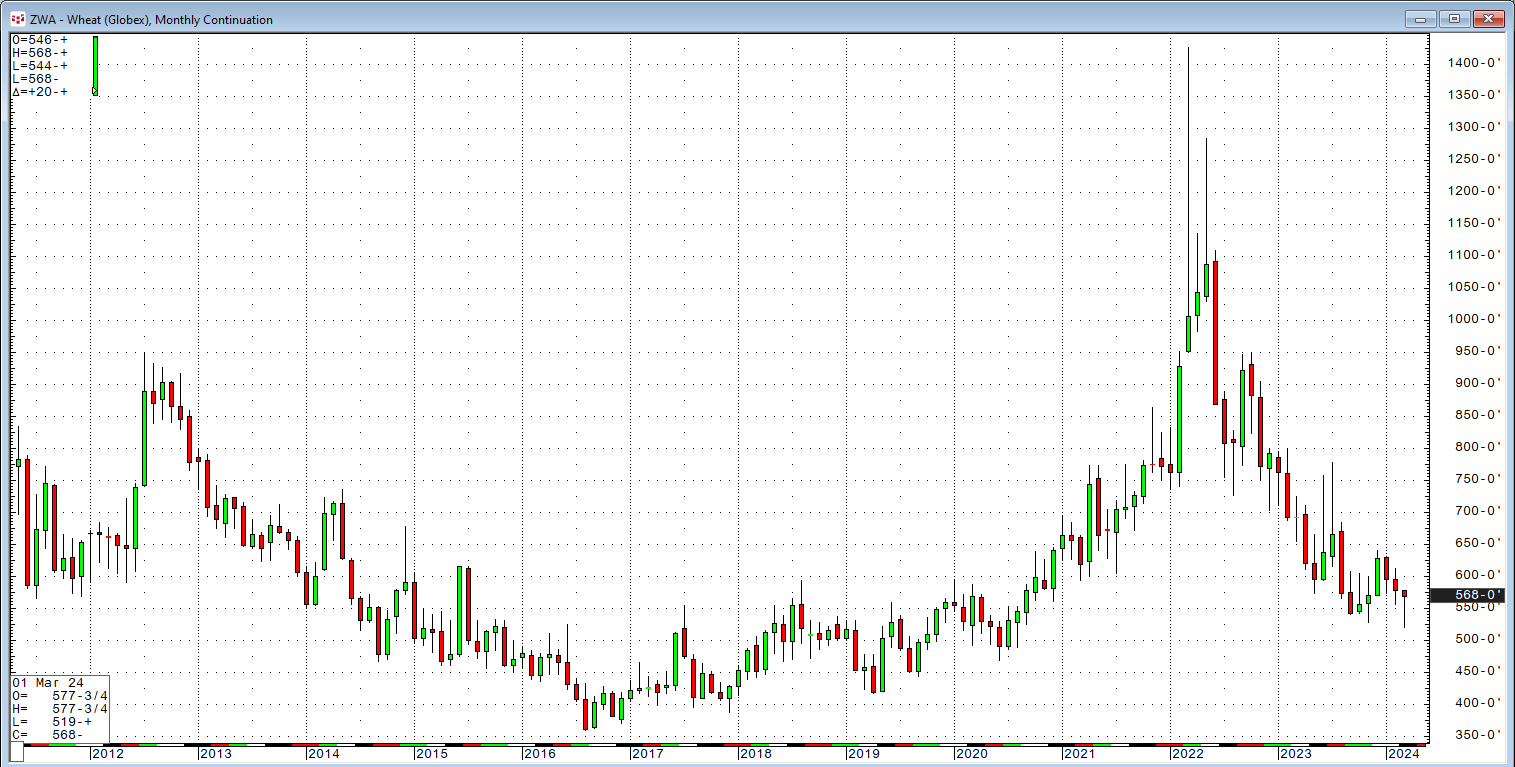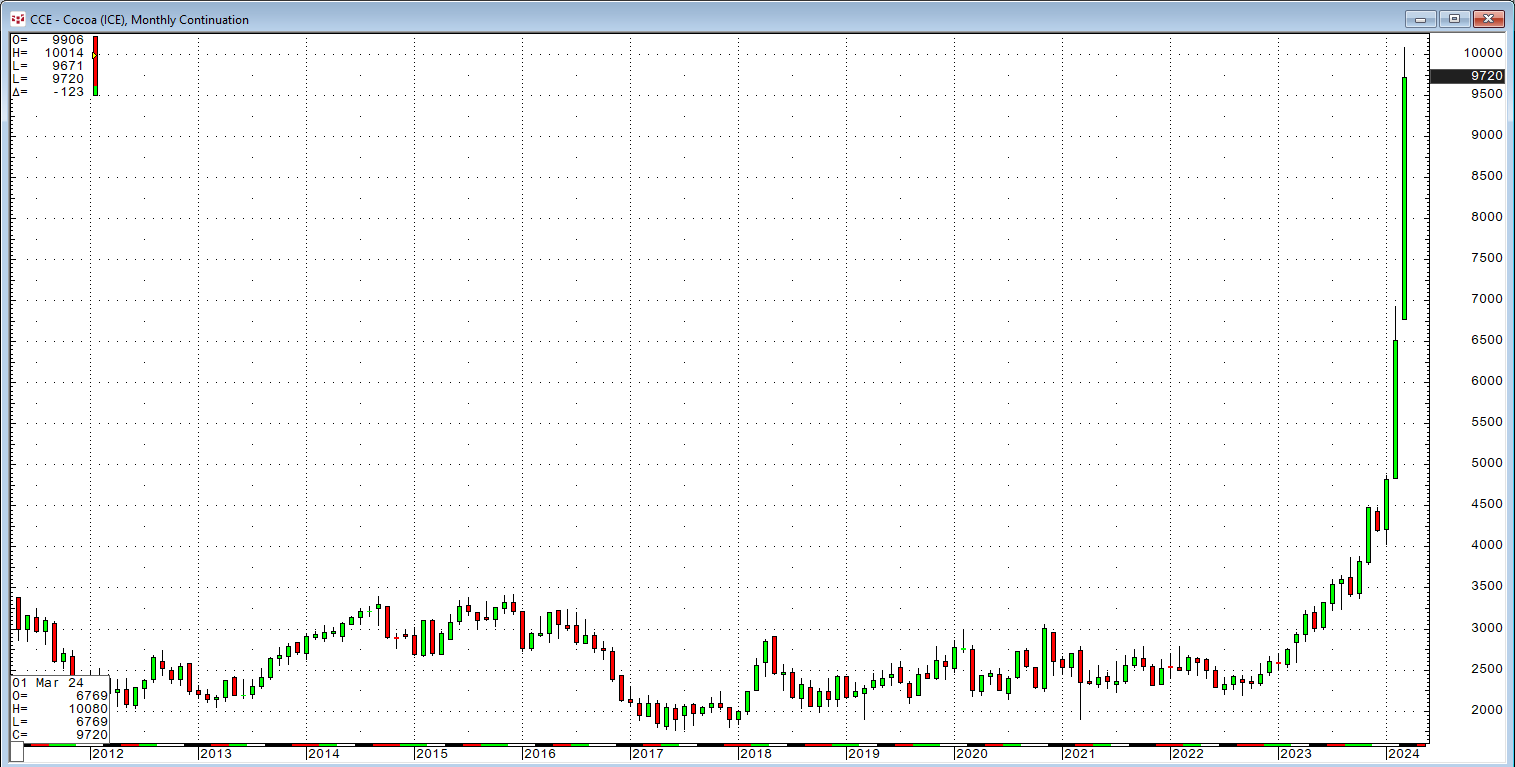As the markets head into 2024's second quarter, the North American agricultural planting season is getting underway. Farmers are now planting the grains that feed and increasingly power the world.
In 2022, corn and soybean futures rose to highs not seen since 2012 and came within pennies of all-time peaks. CBOT soft red winter wheat futures exploded to a new record high, surpassing the 2012 previous all-time peak.
Since the first half of 2022, grain and oilseed futures have significantly declined. While the most recent March USDA World Agricultural Supply and Demand Estimates Report said that ample supplies should continue to weigh on prices, they have declined to levels that could be attractive if Mother Nature's weather conditions do not cooperate and create growing conditions do not lead to another year of bumper crops.
Moreover, the ongoing war in Europe's breadbasket continues to present production and logistical challenges that could impact the fundamental equations of grain and oilseed futures markets over the coming months.
Beans are not in the teens
After trading in the teens and coming within pennies of a record high in 2022, soybean futures corrected significantly lower.
As the chart highlights, soybean futures came within 10.75 cents of the 2012 all-time high in June 2022 when they reached $17.84 per bushel. Since then, the bean futures have made lower highs and lower lows, falling 37.5% to a $11.15 low in February 2024 before recovering to just over the $11.90 level in late March.
Corn prices have plunged
Corn futures have suffered a more significant percentage loss since the 2022 high.
Like soybeans, corn reached $8.27 per bushel in April 2022, within a few cents of the 2012 record $8.4375 high. The chart shows that corn futures fell 52.3% to a $3.9450 low in February 2024 before recovering to over the $4.40 per bushel level on March 26.
Wheat is near the lows
CBOT wheat futures have led the way on the downside on a percentage basis.
Meanwhile, CBOT soft red winter wheat futures reached a record $14.2525 high in March 2022, eclipsing the 2012 previous record peak. The CBOT wheat futures plunged 63.5% to a $5.1975 per bushel low in March 2024 before recovering to over the $5.65 level on March 26. After reaching an all-time high, wheat suffered the most significant percentage loss.
While soybean, corn, and wheat futures have recovered from the recent lows, prices remain not far above the bottoms as the markets head into the 2024 planting season. Grains have been the laggard in the agricultural commodities class. Soft commodities and animal proteins have far outperformed the grain and oilseed futures over the period.
Mother Nature is critical
The world's population has grown to over eight billion, meaning there are more mouths to feed and more lives to power as climate change has made grain and oilseeds inputs in biofuel. Each year, supplies must keep pace with the increasing demand.
The most significant factor for the path of least resistance of agricultural commodities is the weather conditions during the planting, growing, and harvest seasons. The current price action in the cocoa market, another agricultural commodity, reminds us how weather can devastate supplies.
The annual cocoa futures chart dating back to the 1970s highlights the explosive rise to a record $10,080 per ton level in March 2024 as the weather conditions in West Africa have devastated cocoa crops.
In 2023, frozen concentrated orange juice futures rose to over $4 per pound, far above the previous record high of $2.35 in 2016, due to weather-related supply issues with the Floridian and Brazilian crops.
The bottom line is that Mother Nature's weather is always the leading factor in the path of least resistance of agricultural commodity prices, and good weather conditions are not a guarantee for the 2024 grain and oilseed crops.
Geopolitics could cause sudden volatility
The factor that led to the explosive rallies in soybean, corn, and wheat futures markets in 2022 was Russia's invasion of Ukraine, which turned Europe's breadbasket into a warzone.
Two years later, the war continues to rage, with the potential for escalation and involvement of neighboring NATO countries and even the United States. Markets reflect the economic and geopolitical landscapes, remaining highly turbulent in 2024.
Grains and oilseed futures prices are sitting just above the recent lows. Growing demand as a function of increasing population, the uncertainty of the weather over the coming weeks and months, and the geopolitical landscape are reasons why further downside price action in soybean, corn, and wheat futures could be limited, and the upsides explosive.



